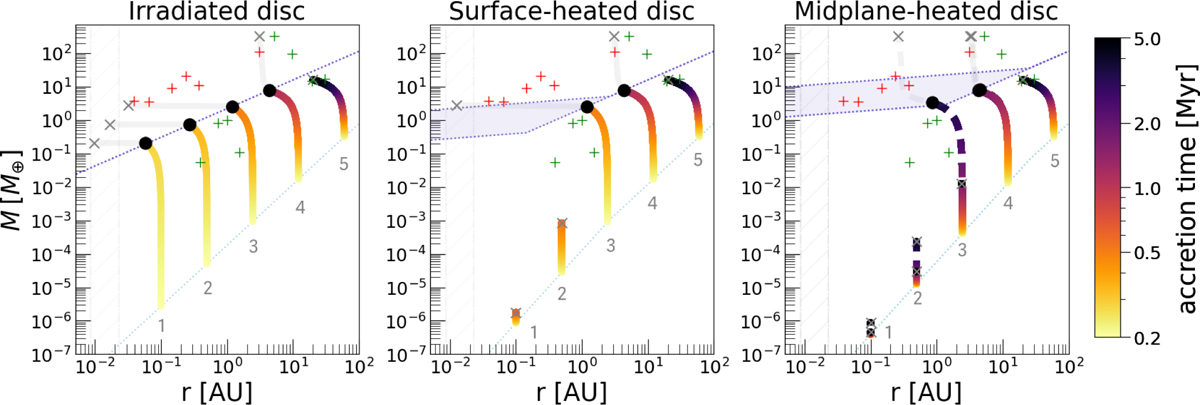Fig. 5

Download original image
Growth tracks of a system of five planets for an irradiated (left panel), surface-heated (central panel), and midplane-heated (right panel) disc. The solid lines represent a system with mutual filtering, while the dashed lines in the right panel show the same system but without mutual filtering. Colour-coded is the accretion timescale. The dotted light blue line is the initial mass of the embryo distribution. The dotted violet line represents the pebble isolation mass, which is time-dependent for the viscously heated discs; therefore, the shaded violet region shows the changing location of the isolation mass between the initial and final time of the simulation. The shaded grey area marks the magnetospheric cavity radius, which shifts outwards with time. The black dots identify where the planet crosses the pebble isolation mass, while the grey crosses represent the final mass and position of the planets. The grey lines mark the gas accretion phase. For reference, the green and black crosses represent the Solar System and the HD 219134 planets (Vogt et al. 2015) respectively. Mutual filtering is irrelevant in irradiated discs because of the fast inside-out growth mode, while it can become relevant for strong midplane heating, aided by the growth delay in the inner disc due to viscous heating.
Current usage metrics show cumulative count of Article Views (full-text article views including HTML views, PDF and ePub downloads, according to the available data) and Abstracts Views on Vision4Press platform.
Data correspond to usage on the plateform after 2015. The current usage metrics is available 48-96 hours after online publication and is updated daily on week days.
Initial download of the metrics may take a while.


